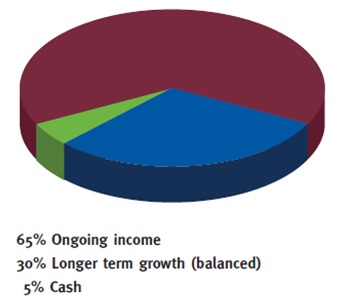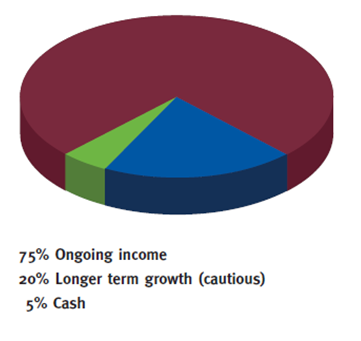Profile: Sarah is relatively young and has a long term investment horizon. As she is working and doesn’t need to generate an investment income yet, she wants to pursue an adventurous strategy that can help her to maximise her capital growth potential.
Investment strategy: A risk assessment will be carried out to ensure Sarah has the capacity to tolerate an adventurous investment strategy, the associated risks and level of volatility. Then, after setting aside a suitable emergency cash reserve, the recommended investment portfolio will primarily include exposure to the UK via direct share holdings and overseas markets via collective funds. The portfolio may also provide exposure to specialist (non-mainstream/niche) investment themes. The specialist exposure allows investments to be made into funds with a very focused mandate such as commodities, technology, currency or emerging market country/region specific funds. It has very little, if any, exposure to bonds. The aim is that in the longer term, the portfolio will help Sarah to maximise her growth potential.







